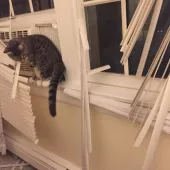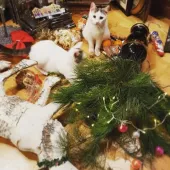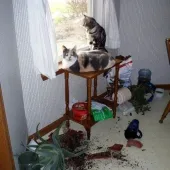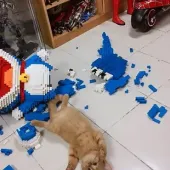Cat who like to destroy things
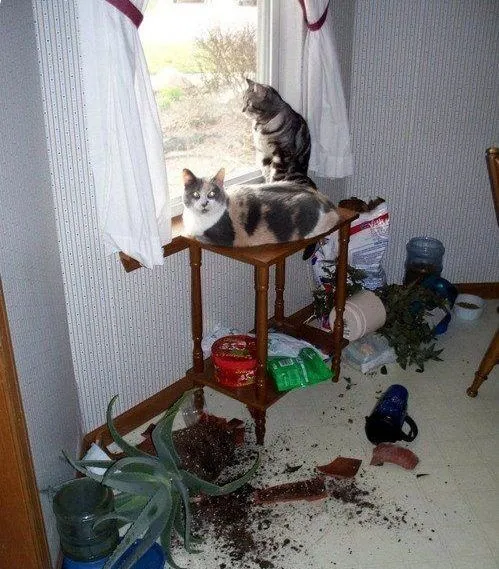
Does your cat steal food, chew on your things, scratch the furniture, or dig up your plant pots? If the answer is yes, your pet may be trying to get your attention, having fun on its own, or showing that it is stressed. Different things can make cats do bad things, so you need to figure out why your cat is doing it before you can stop it.
Common Signs of Destructive Behavior
Destructive behavior in cats can manifest in various ways:
1. Scratching Furniture and Surfaces:
- Cats have a natural instinct to scratch as a way of marking their territory and keeping their claws healthy. Unfortunately, this behavior can lead to damage to furniture, carpets, and other household items.
2. Chewing and Gnawing:
- Some cats may engage in excessive chewing or gnawing on household objects, such as cords, plants, or even clothing. This behavior can be dangerous for the cat and damaging to personal belongings.
3. Excessive Digging and Litter Box Issues:
- Cats may dig excessively in their litter box, potentially scattering litter everywhere. In some cases, they may avoid using the litter box altogether, choosing inappropriate spots in the home.
4. Aggressive Behavior:
- Destructiveness can also manifest through aggression, including scratching, biting, or attacking people or other pets in the household.
Why does my cat do bad things?
Most feral house cats hunt for eight hours every day, which means they use a lot of mental and physical energy just to get food. Cats, on the other hand, always eat from a bowl and don't take long to do so. Since hunting is such an important thing for cats to do, cats that are allowed to go outside often go hunting even though they are fed by their owners. If your cat doesn't go outside or has limited access to the outside, it can't show all of its normal behaviors. It may become lazy and sad, or it may show signs of being frustrated. Kittens may act out their anger by doing bad things.
When their cats do something bad, many cat owners chase them, spray them with water, or distract them with a toy or food. This might stop the cat from doing something for a short time, but it might make it more likely to do it again in the long run. Cats quickly learn that if they do something bad, their owner will play a more fun game with them. When cats learn this, they may start to use damaging behavior as a way to get the owner's attention.
To keep cats from getting angry, you should make sure their setting is as interesting as it can be. Try to do all the things your cat would do outside instead. Give it chances to play, make the most of the room you have, and make it work for its food.
1. Lack of Mental and Physical Stimulation:
- Cats are active animals that require mental and physical stimulation. Without proper outlets for their energy, they may resort to destructive behavior as a means of releasing pent-up energy.
2. Stress and Anxiety:
- Changes in the environment, such as a new pet, a move, or even loud noises, can trigger stress and anxiety in cats. Destructive behavior may be an outlet for their heightened emotions.
3. Medical Issues:
- Pain or discomfort due to medical conditions can lead to destructive behavior. Cats may try to alleviate their discomfort by engaging in chewing, scratching, or other destructive activities.
4. Unmet Needs:
- Cats have specific needs, including a clean litter box, a balanced diet, and regular playtime. Neglecting these needs can lead to frustration and destructive behavior.
How can I keep my cat from running into things?
Cats can get rid of their energy through play, and you can get them to use their natural hunting skills by giving them toys that make them stalk and chase. The things that cats are most interested in are small, have rough surfaces, and move. Cats should be able to play on their own when you're not around or busy. For example, you can hang toys in front of windows so that any breeze will move the toy around and interest the cat. You should play with your cats as much as you can. Here are some ideas: use fishing stick toys. To keep toys interesting, you should change them often. Do not use your feet or hands to play with your cat, as this could lead to inappropriate play where the cat will lick or bite parts of your body.
You can also do more during eating time. Cats have to work harder to get the food out of puzzle feeders than bowls. To make your own puzzle feeder, cut holes in a small plastic bottle just big enough for dried cat biscuits and fill it with dry food. You can buy them at pet stores. Food falls out of the bottle as the cat taps it on the floor. You could also put small amounts of food in scrunched-up pieces of paper around the house. Your cat will have to look for these and then figure out how to get to the food. Place the dry food right next to the bowl at first to get the cat used to the idea. Then move the food farther away from the bowl until it's spread out all over the house. It will take your cat a lot more time to hunt for his food instead of just eating from a bowl if you make him work for it like this.
Another thing cats like to do is move around in three dimensions (on all levels). To make your cat's surroundings more interesting, put shelves at different heights that they can jump on. Cats usually like to climb and jump, and they like to spend a lot of time on high places where they can see what's going on around them. In homes with more than one cat, being able to get to a high place is especially important for cats. Cats like to climb, jump, scratch, and rest. To meet their needs, you can build anything from simple scratching posts with a shelf to complicated structures with lots of shelves, beds, and scratching posts. Also, cats like to hide and explore, so giving them boxes, even plastic ones, will make them feel better and give them more things to do.
The grain should go up and down on scratching posts because cats like to run their claws down the thread instead of across it. The cat's scratching posts need to be both tall enough to let him stretch out fully and stable enough that they won't fall over when he leans on them. If these things are true about the scratching posts, the cat probably won't want to scratch the back of the couch.
Is my cat being harmful for some other reason?
Cats normally scratch, and they do it to mark things and keep their nails sharp. But because they are anxious, some cats scratch the furniture or do other harmful things. So, giving the cat a more interesting place to live might not be enough to stop it from scratching.
Should I give my cat a treat for being so bad?
Cats that are destructive may not stop being destructive even if they are punished for it. It's more important to deal with the reasons the cat does what it does in the first place. You might also lose touch with your cat and make him nervous when you're around if you punish him. The cat might even enjoy some punishments; if it's bored, being chased around the house or sprayed with water might be fun for it. Similarly, using a toy or food to distract a cat will only reinforce the bad behavior and show the cat that it's okay to be bad.
Addressing Destructive Behavior
1. Provide Enrichment:
- Engage your cat's mind and body with interactive toys, climbing structures, and puzzle feeders. This can help redirect their energy in a positive and stimulating way.
2. Create a Safe Space:
- Offer a designated area with scratching posts, toys, and a cozy bed. This can serve as a sanctuary for your cat to retreat to when they feel overwhelmed.
3. Consult a Veterinarian:
- If you suspect a medical issue may be causing the behavior, consult with a veterinarian. They can perform a thorough examination and provide appropriate treatment.
4. Behavioral Training:
- Positive reinforcement training can help modify destructive behavior. Rewarding desired behavior with treats or praise can be effective in encouraging better habits.
5. Utilize Deterrents:
- Use cat-friendly deterrents, such as double-sided tape or pet-safe sprays, to discourage destructive behavior on specific surfaces or objects.
In conclusion, understanding and addressing destructive behavior in cats is essential for maintaining a happy and healthy living environment. By identifying the underlying causes and implementing appropriate solutions, you can help your feline companion thrive and foster a positive relationship between you and your cat. Remember, patience and consistency are key when working with any behavioral issue.

